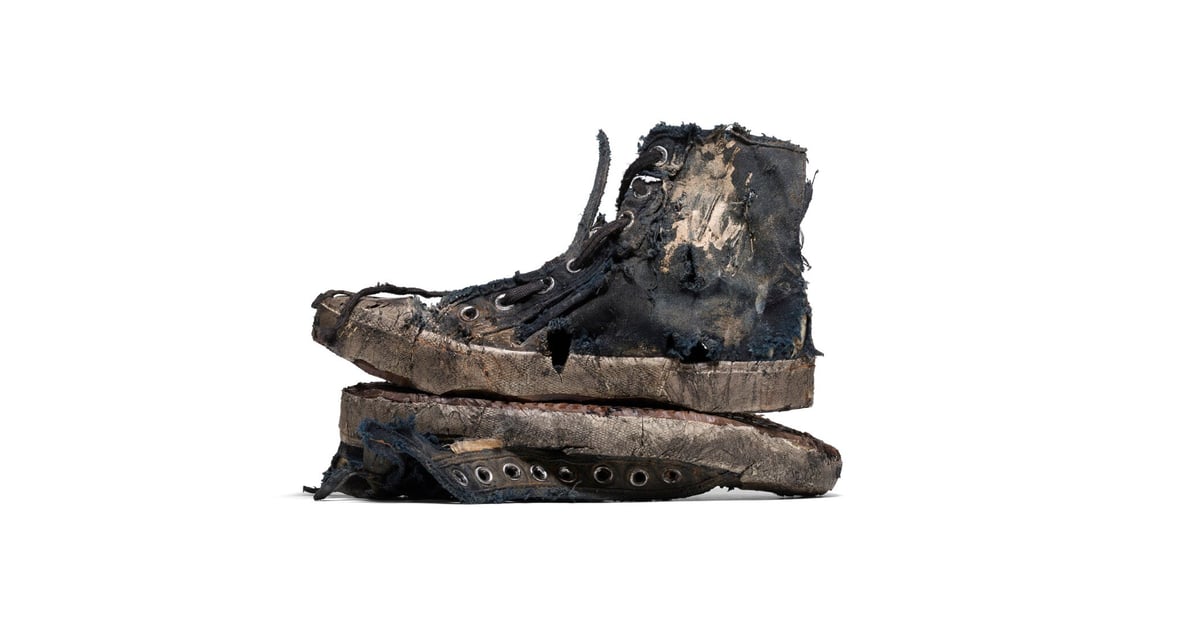
On May 9, Balenciaga started preorders on its limited-edition Paris High Top sneaker. What makes this version of the brand’s high-top shoe so special — as to warrant a limited run and a $1,850 price tag — is that they are “full destroyed.” The sneakers look like they have been worn for decades, complete with rips and a dirt-color-stained rubber sole. Comparatively, the regular Paris sneaker is $625 and offers the same style just without all the roughing up.
Despite the many, many people on social media who are hoping the release is a joke, it is, in fact, a real sneaker. And it’s one that is begging for a proverbial dunk from anyone who has ever worn a shoe until it is destroyed because, you know, life. A moment of silence for my old waitressing sneakers that unfortunately didn’t make it to this day to see themselves declared a high-fashion accessory.
Jokes aside, perhaps this is all part of why Balenciaga keeps designing collections like this. The buzz spreads awareness and people actually do purchase items based on hype alone. Or, as one person tweeted, maybe it’s all just one ongoing social experiment. (See also: their caution-tape catsuit that one has to be cut out of).
It all begs the question: what exactly is the brand trying to communicate by selling these damaged sneakers at such a high cost?
Balenciaga hinted that its intention was to spotlight our often-fleeting relationship with our clothing. According to a press release, the photos are meant to suggest longevity.
“These still life portraits, by photographer Leopold Duchemin, suggest that Paris Sneakers are meant to be worn for a lifetime,” it reads.
That sounds nice, but since that principle isn’t built into the design from concept to completion, it lessens the impact. For example, if a shoe is really made for longevity, why not use materials designed for recycling or resale?
What’s more, it seems odd to create a collection of brand-new shoes and destroy them when we live in a world where fashion waste is a persistent problem. Sneakers use a number of components like glue and rubber which make them difficult to recycle. Ninety percent end up back in a landfill, according to The Guardian. Instead of creating a new shoe to destroy and sell, perhaps a more poignant statement could be to resell sneakers to extend their life.
One good thing about Balenciaga’s destroyed shoe is that it could inspire a trend of rewearing items we already own. As one person put it, “I was just about to throw out my 12-year-old Vans but I guess they are high fashion.”
Alyssa Hardy is a journalist and author based in New York City. She was formerly senior news editor at InStyle and fashion news editor at Teen Vogue. She is the publisher of “This Stuff,” a weekly fashion newsletter. Alyssa’s debut non-fiction book Worn Out: How Our Clothes Cover Up Fashion’s Sins comes out September 27, 2022 but is available for pre-order now.
